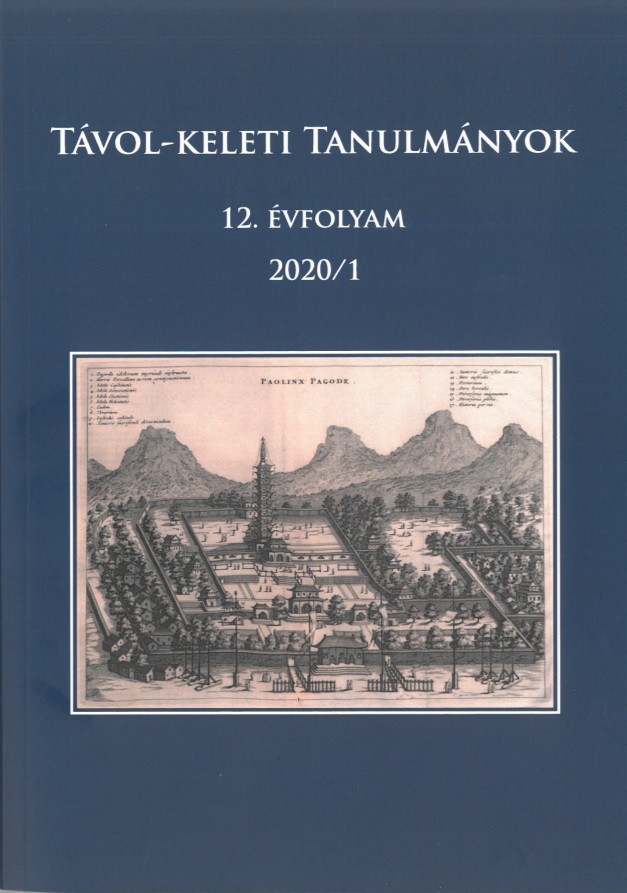Published 2021-02-25
Keywords
- kanji,
- learning,
- techniques,
- experiences,
- motivation
How to Cite
Copyright (c) 2021 the author(s)

This work is licensed under a Creative Commons Attribution-NonCommercial 4.0 International License.
Abstract
I researched the character learning strategies of Japanese language learners. During the process of acquiring a foreign language, the learner acquires communicative competence in the foreign language by recognizing linguistic techniques and methods, and language usage which is often significantly different from their mother tongue. With regard to Japanese, learning written characters requires unique methods. I provide insight into the strategies employed by students as they learn Japanese characters. I will touch on factors that play a role in the choice of study methods such as motivation, the learner’s native language writing system, and awareness.
References
- Írásjegytanulási stratégiák című kérdőív. Készítette: Takács Veronika. Adatfelvétel módja: online kérdőív. Adatfelvétel időtartama: 2019.06.14. – 2019.06.28. Adatközlők száma: 179 fő.
- Aoki, Naomi 2012. „The challenge of motivation: Teaching Japanese kanji characters to students from diverse language backgrounds.” In: Xianlin Song – Kate Cadman (eds.): Bridging Transcultural Divides. Australia: University of Adelaide Press, 131–153.
- Budai László 2010. Az anyanyelv változó szerepe az idegennyelv-oktatásban. Angol nyelvi példákkal. Budapest: Nemzeti Tankönyvkiadó.
- Bándli Judit 2014. „A pragmatikai kompetencia fogalma a nyelvoktatásban.” THL2 A magyar nyelv és kultúra tanításának szakfolyóirata 1: 34–43.
- Conning, Andrew Scott 2013. The Kodansha Kanji Learner’s Course. A Step-by-Step Guide to Mastering 2300 Characters. New York: Kodansha USA.
- Davis, Stephen J. 2014. „Learning Letters”. In: Davis, Stephen J. – Martin, Dale B. – Welborn L. L. (eds.): Christ Child: Cultural Memories of a Young Jesus. United States: Yale University Press, 92–125.
- Epp, Robert 1969. „On Reading Crowley's Theory on the Function of kanji.” The Journal-Newsletter of the Association of Teachers of Japanese 6/2: 50–52.
- Ezaki, Motoko 2010. „The Role of [kanji] in Contemporary Japanese.” Japanese Language and Literature 44/2: 179–212.
- Frellesvig, Bjarke 2010. A History of the Japanese Language. Cambrige: Cambridge University Press.
- Haruko Matsui – Junko Shinada – Keiko Ito – Mikiko Ochiai – Satoko Mizoguchi (szerk.) 2011. Japanese for busy people Series (Book 1). Tokyo–New York–London: Kodansha International.
- Kovács Gábor 2014. „Idegennyelv-elsajátítás.” In: Pszicholingvisztika 1–2. Budapest: Akadémiai Kiadó, 593–674.
- Matsumoto Kazumi 2013. „Kanji Recognition by Second Language Learners: Exploring Effects of First Language Writing Systems and Second Language Exposure.” The Modern Language Journal 97/1: 161–177.
- Mori, Yoshiko 2003. „The Roles of Context and Word Morphology in Learning New Kanji Words.” The Modern Language Journal 87/3: 404–420.
- Mori, Yoshiko 2012. „Five Myths about [Kanji] and [Kanji] Learning.” Japanese Language and Literature 46/1: 143–169.
- Öveges Enikő – Csizér Kata (szerk.) 2018. Vizsgálat a köznevelésben folyó idegennyelv-oktatás kereteiről és hatékonyságáról.
- https://www.oktatas.hu/pub_bin/dload/sajtoszoba/nyelvoktatas_kutatasi_jelentes_2018.pdf
- (Utolsó letöltés: 2020. 06. 09.)
- Péter-Szarka Szilvia 2007. Az idegennyelv-tanulási motiváció jellemzői és változásai a felső tagozatos életkorban PhD-értekezés, Debreceni Egyetem.
- Rose, Heath 2013. „L2 Learners' Attitudes Toward, and Use of, Mnemonic Strategies When Learning Japanese Kanji.” The Modern Language Journal 97/4: 981–992.
- Rose, Heath 2017. The Japanese Writing System: Challenges, Strategies and Self-regulation for Learning Kanji. Bristol, United Kingdom: Channel View Publications Ltd.
- Shibatani Masayoshi 1990. The Language of Japan. Cambrige: Cambridge University Press.
- Schmidt Ildikó 2019. A magyar írás és olvasás tanítása – Az alfabetizálás folyamata. Budapest: L’Harmattan Kiadó.
- Steinberg, Denny D. – Yamada Jun 1979. „Are Whole Word Kanji Easier to Learn than Syllable Kana?” Reading Research Quarterly 14/1: 88–99.
- Szűcs Tibor 2006. „A kontrasztív nyelvészet szerepe a magyar mint idegen nyelv tanításában.” In: Hegedűs Rita – Nádor Orsolya (szerk.): Magyar nyelvmester. Budapest: Tinta Könyvkiadó. 97–111.
- Wixted, John Timothy 1983. „The Kokinshū Prefaces: Another Perspective.” Harvard Journal of Asiatic Studies 43/1: 215–238.
- Yamaguchi Nakami 山口仲実 2006. Nihongo no rekishi 日本語の歴史 [A japán nyelv története]. Tokió 東京: Kabushiki gaisha 株式会社.
- Yanabu Akira 2009. „Translation in Japan: The Cassette Effect.” Traduction, terminologie, rédaction 22/1: 19–28.

